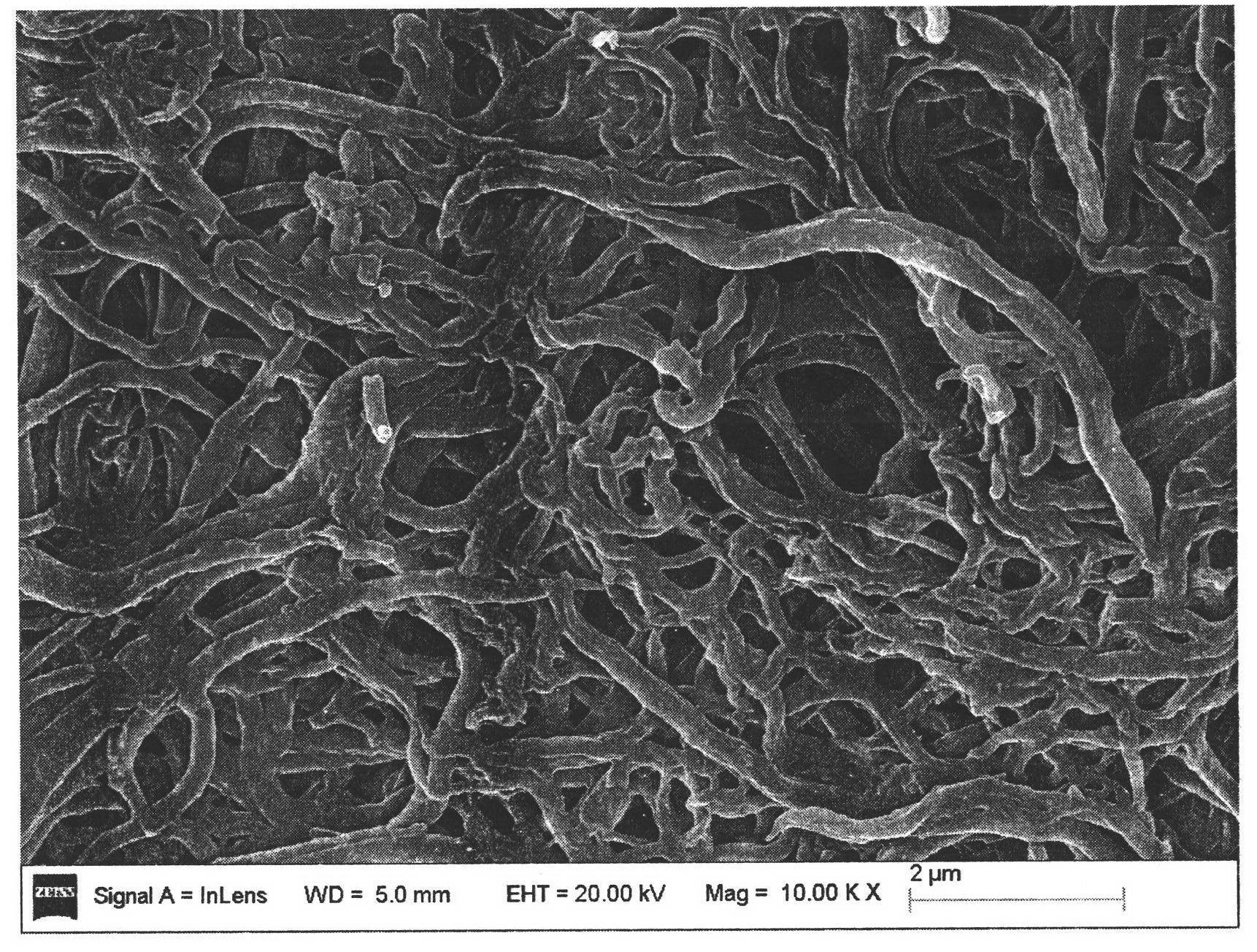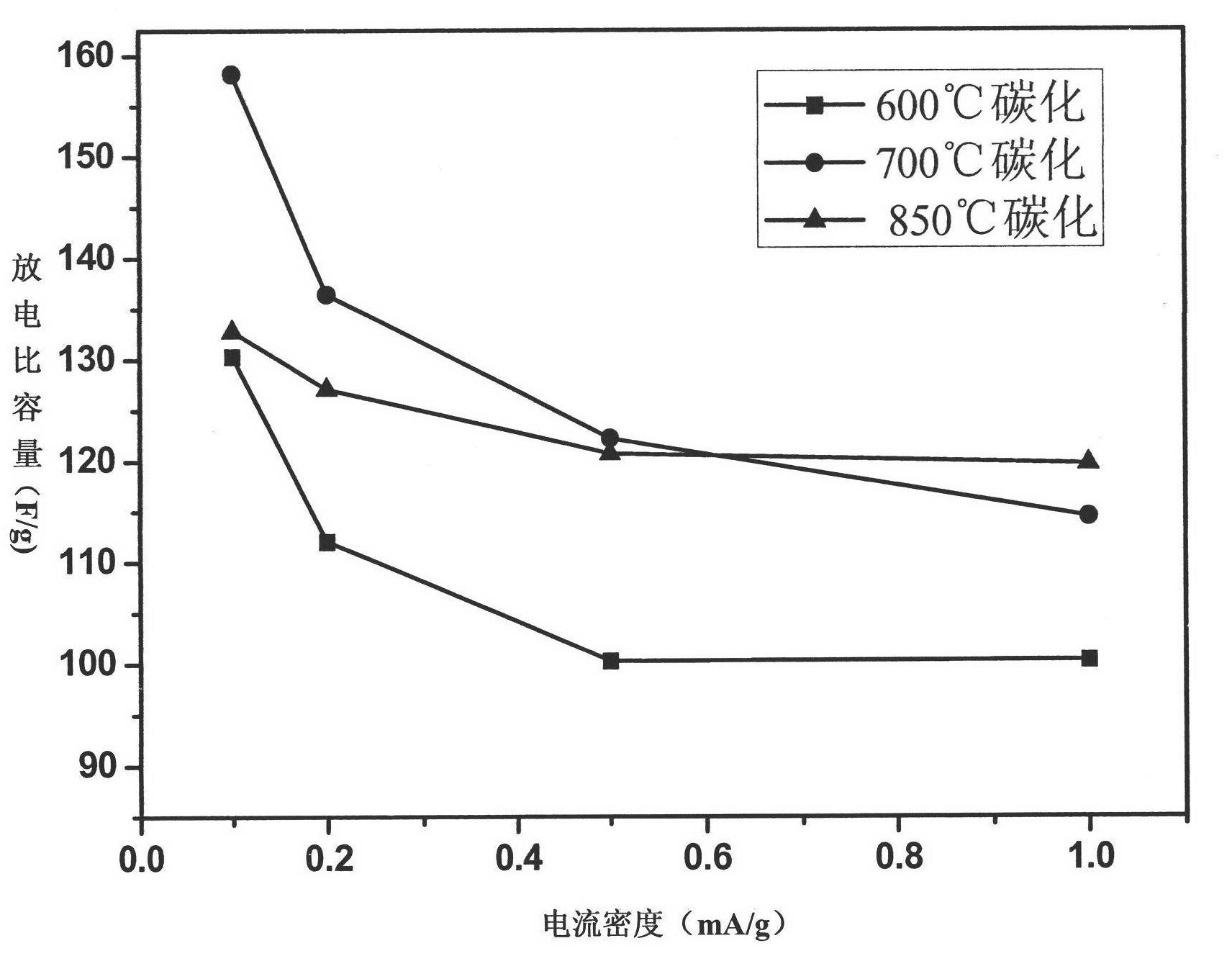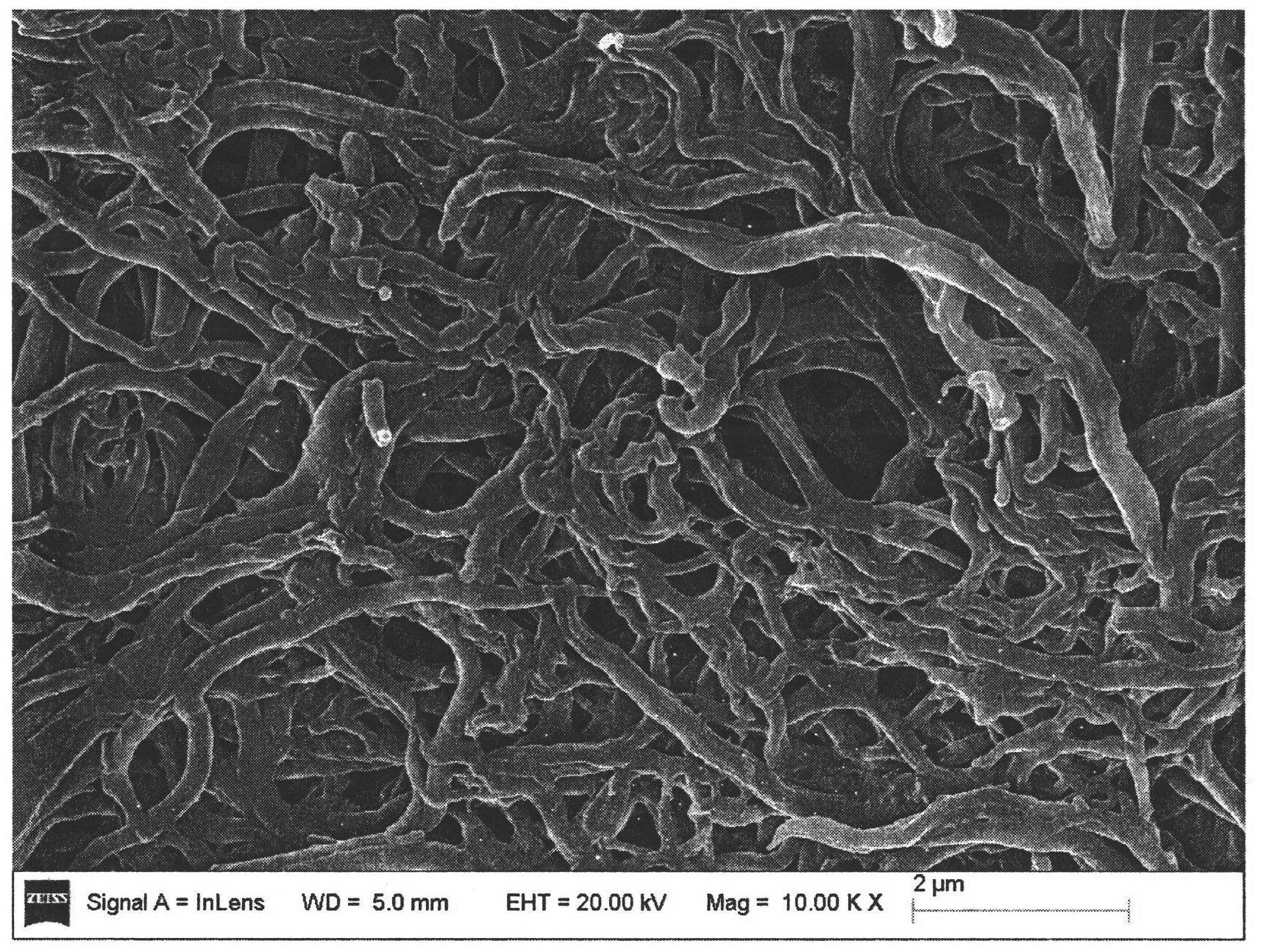Preparation method and application of conducting polymer-based nanometer carbon fibers
A technology of conductive polymers and nano-carbon fibers, which can be used in the fields of fiber chemical characteristics, circuits, capacitors, etc., and can solve problems such as high cost, unfavorable, complicated process, etc.
- Summary
- Abstract
- Description
- Claims
- Application Information
AI Technical Summary
Problems solved by technology
Method used
Image
Examples
Embodiment 1
[0016] Pre-oxidize 1 g of conductive polyaniline nanofibers in an air atmosphere at 200°C for 4 hours to obtain a pre-oxidized product; then put the pre-oxidized product into a high-temperature carbonization furnace and heat it under a nitrogen atmosphere with a heating rate of 1°C. min -1 , from room temperature to 600 ° C for 2 hours, that is, conductive polymer-based carbon nanofibers.
[0017] as attached figure 1 The morphology of polyaniline-based carbon fibers shown by scanning electron microscopy (SEM) remained intact.
[0018] as attached figure 2 The results of electrochemical performance test show that the electrode material is at 0.1A·g -1 The discharge specific capacity under the current density can reach 130F·g -1 ; at 1A g -1 After 100 cycles at current density, the discharge specific capacity can maintain 110F·g -1 .
Embodiment 2
[0020] Pre-oxidize 1 g of conductive polypyrrole nanofibers in a carbon dioxide atmosphere at 300 °C for 3 h to obtain a pre-oxidized product; then put the pre-oxidized product into a high-temperature carbonization furnace and heat it under a nitrogen atmosphere with a heating rate of 1 °C. min -1 , from room temperature to 700 ° C for 1 hour, that is, conductive polymer-based carbon nanofibers.
[0021] as attached figure 2 The results of electrochemical performance test show that the electrode material is at 0.1A·g -1 The discharge specific capacity under the current density can reach 158F·g -1 ;1A·g -1 After 100 cycles at current density, the discharge specific capacity can maintain 110F·g -1 .
Embodiment 3
[0023] Pre-oxidize 1 g of conductive polythiophene nanofibers in a carbon dioxide atmosphere at 400 °C for 2 h to obtain a pre-oxidized product; then put the pre-oxidized product into a high-temperature carbonization furnace and heat it under a nitrogen atmosphere with a heating rate of 1 °C. min -1 , from room temperature to 850 ° C for 1 hour, that is, conductive polymer-based carbon nanofibers.
[0024] as attached figure 2 The results of electrochemical performance test show that the electrode material is at 0.1A·g -1 The discharge specific capacity under the current density can reach 132F·g -1 ;1A·g -1 After 100 cycles at current density, the discharge specific capacity can maintain 123F·g -1 .
PUM
| Property | Measurement | Unit |
|---|---|---|
| pore size | aaaaa | aaaaa |
Abstract
Description
Claims
Application Information
 Login to View More
Login to View More - R&D
- Intellectual Property
- Life Sciences
- Materials
- Tech Scout
- Unparalleled Data Quality
- Higher Quality Content
- 60% Fewer Hallucinations
Browse by: Latest US Patents, China's latest patents, Technical Efficacy Thesaurus, Application Domain, Technology Topic, Popular Technical Reports.
© 2025 PatSnap. All rights reserved.Legal|Privacy policy|Modern Slavery Act Transparency Statement|Sitemap|About US| Contact US: help@patsnap.com



